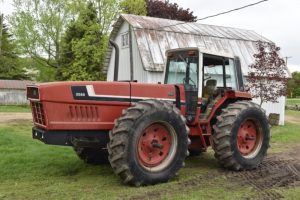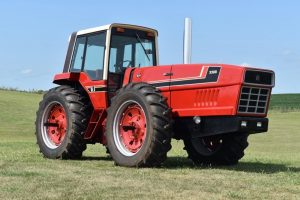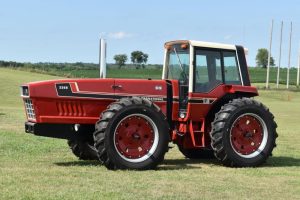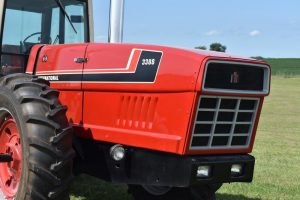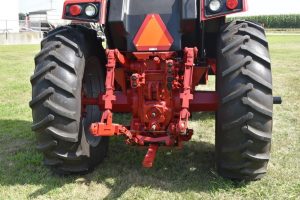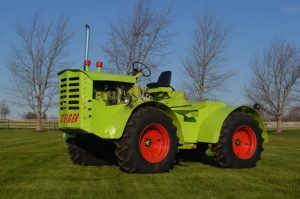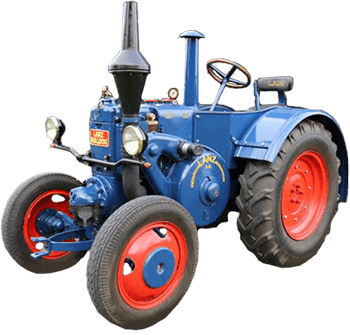November 18, 2020
Top 10 Four Wheel Drive Classic Tractors
There’s been four wheel drive tractors since the start of the industry, but they didn’t catch on until the late 1950’s. At that time, farms were getting bigger and farmers needed large tractors with more horsepower.
Four wheel drive tractors with over 100 horsepower seemed to be the answer. Some of these tractors were great successes while others massive failures. Let’s take you through our top ten classic four wheel drive tractors.
10 – Wagner Tractormobiles

The Wagner Brothers developed and patented their tractor in 1953 and started selling in 1954 with three models the TR-6, TR-9 and TR-14 which they called Tractormobiles. All three were articulating four-wheel drive tractors. Wagner is credited for manufacturing the first successful 4WD tractors.
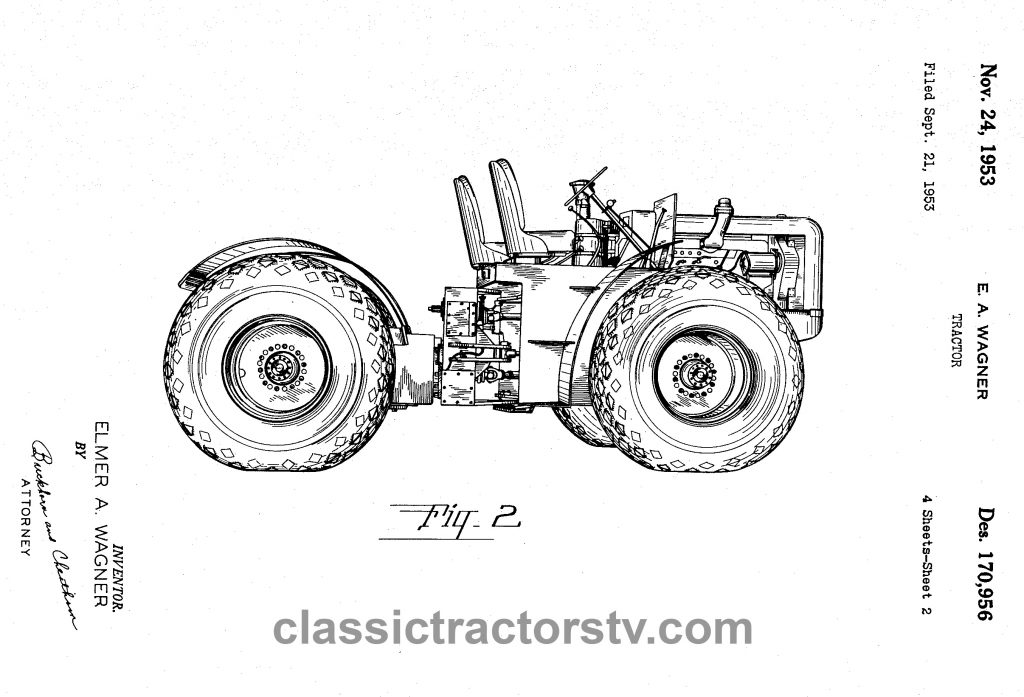
The TR-6 was their smallest tractor weighing in at 12,700 pounds with a Cummins 6-cylinder, 401 cubic-inch diesel engine that could do 105 horsepower.
The TR-9 was the company’s mid-sized tractor weighing in at 15,270 pounds. It had a Cummins 4-cylinder, 495 cubic-inch, diesel engine that was rated at 120 horsepower and could do 87.5 horsepower on the drawbar.
The TR-14 was the largest tractor Wagner made weighing in at 21,050 pounds. It was powered by a Cummins 6-cylinder, 672 cubic inch diesel engine which could do 175 horsepower.
All three tractors used a Fuller transmission with 10 forward speeds and two reverse speeds. These models were built until about 1960.
In 1961 Wagner was sold to the Four Wheel Drive Corporation of Clintonville, Wisconsin which manufactured heavy-duty off road vehicles. They created a tractor division called FWD Wagner. Beginning in 1969 John Deere bought out the production of Wagner Tractors, until they developed their own model after the failed 8010s and 8020s.
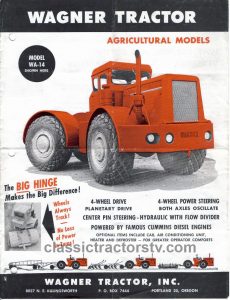
John Deere re-entered the four wheel drive tractor market in 1971, but Wagner had signed a 5 year no-compete clause which left Wagner unable to build tractors. This essentially ended Wagner in the agricultural market.
9 – The Versatile D-100 and G-100
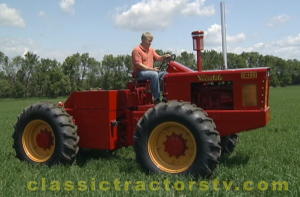
The two models were almost identical, the G-100 had a gasoline engine while the D-100 had a diesel engine. These two tractors were the first four wheel drive articulated models built by the Versatile Company of Winnipeg in Canada.
The D-100 has a Ford Industrial, 6-cylinder, 363 cubic- inch diesel engine that can do 100 horsepower. The G100 has a Chrysler Industrial 8-cylinder, 318 cubic-inch gasoline engine that could do 100 horsepower. The transmission has four gears, plus one reverse with a four-speed transfer case which made it capable of 12 forward speeds and 4 reverse speeds. The tractor was lighter than some of its competitors weighing in at 14,500 pounds.
The D100 and G100 tractors became extremely popular with their $10,000 price tag, about one third of the cost of similar models made by other tractor manufacturers like John Deere and International Harvester.
These tractors were only produced in 1966 with a total of 100 diesels and 25 gas. Although production numbers were low in the first year, the company produced over 1,000 tractors in 1967. Versatile was the first companies to mass-produce articulated four-wheel drive tractors. At one time the company controlled 70% of the 4WD tractor market.
8 – The John Deere 8010 and 8020
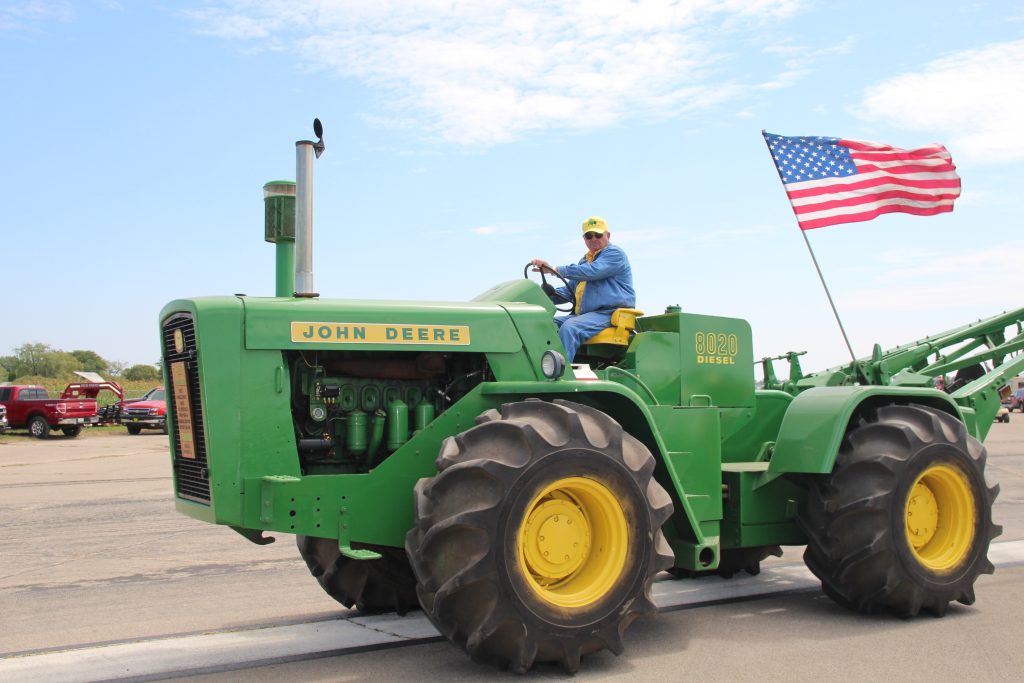
The 8010 was John Deere’s first attempt at building and marketing their own four wheel drive articulated tractor. It was released in 1960 along with Deere’s New Generation series tractors which marked the end of the two cylinder design and introduced new four and six cylinder engines.


The 8010 is powered with a 6-cylinder, 425 cubic-inch Detroit Diesel engine rated at 215 horsepower. This massive tractor weighed in at 20,000 pounds. It could run at 7 mph pulling a custom designed 5,000 pound eight-bottom plow. At that speed it could turn out 50 acres of soil per day. The tractors also carried a hefty price tag of $30,000 US dollars or about $257,000 US dollars in 2019.
Early on the 8010s developed a serious flaw. The Spice transmissions began to overheat causing the seals to fail which would soak the clutches in oil. Deere initiated a recall on all of the 8010’s. Back at the factory the transmissions were replaced, engines tests and clutches updated. When the recalled tractors went back to their owners they were re-lettered as 8020s and all remaining models were marketed as 8020s.
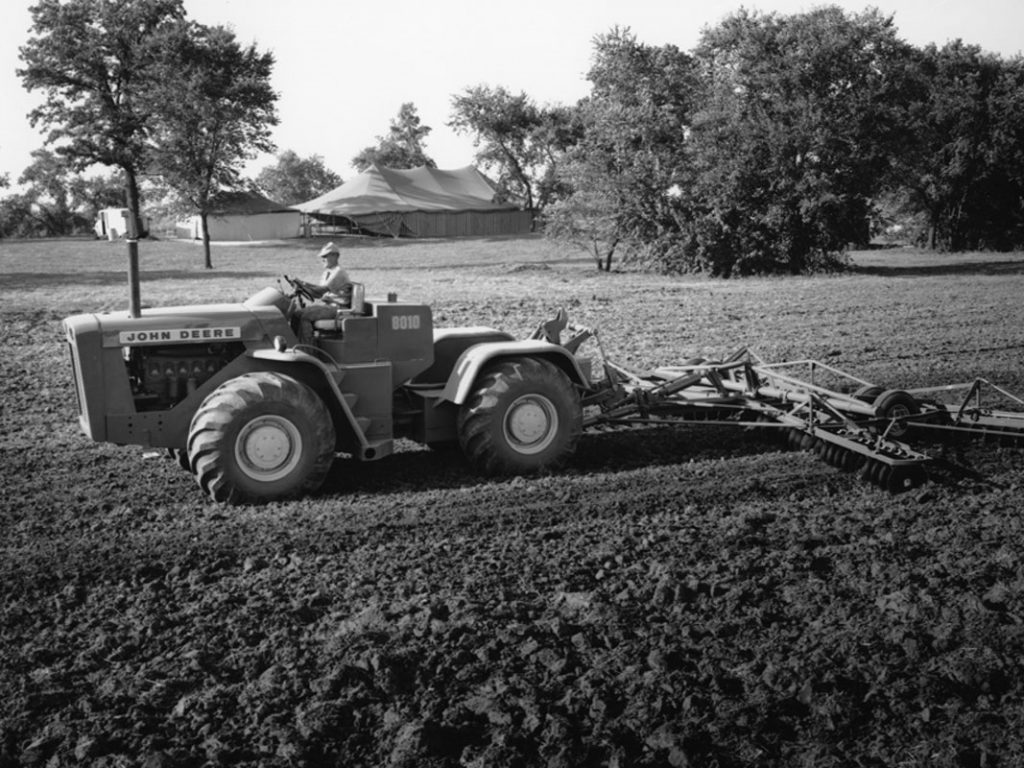
In the end the tractor proved a failure for Deere. Only about 100 of these tractors were built, with between 80 and 90 still in existence. Only one 8010 survived the recall and resides in the Keller Collection.
7 – The Allis Chalmers T16 “Sugar Babe”

This was Allis-Chalmers first attempt at building and marketing a four wheel drive tractor. Also known as the Sugar Babe, this tractor design started its life as an Allis Chalmers TL16 industrial loader. The loader was removed, the steering re-arranged and the operators platform reversed to transform the tractor into the T16. Yellow painted versions were sold through the Allis Chalmers industrial division for use as haulers in the sugarcane fields, from which the name Sugar Babe originated.
The T16 was originally powered by an Allis-Chalmers 4-cylinder, 344 cubic inch turbocharged diesel engine. Problems with this engine developed and the four-cylinder engine was replaced at serial number 1910 with an Allis-Chalmers 6-cylinder 426 cubic inch turbocharged diesel engine that could do about 135 horsepower.
When the T16 were in heavy use in the cane fields more problems arose with the Allis Chalmers engine and most T16 were replaced with a 471 Detroit Diesel engine. Only about 15 of these tractors were sold during its production run from about 1963 to 1964. Today less than half a dozen are still known to exist.
6 – The Minneapolis-Moline A4T-1400

In 1969 Minneapolis Moline produced its first articulated four wheel drive tractor. The tractor was offered as the Minneapolis Moline A4T-1400, the White Plainsman A4T-1600 and as the Oliver 2455.

Minneapolis Moline built the A4T series tractors from about 1969 to 1972 including the A4T-1400 and A4T-1600 with a total of 1,676 built. Records show that only 247 Diesel A4T-1400 tractors were built.
The A4T-1400 is powered by a Minneapolis Moline 6-cylinder, 504 cubic-inch diesel engine that could do about 139 horsepower. There was an option to turbo charge the engine which brought the rating up to 154 horsepower.
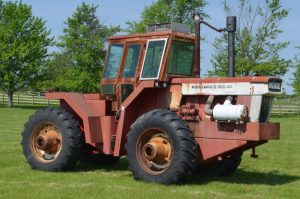
There was an option for a cab, but they were not installed at the factory but instead by the dealers. The transmission has 10 forward speeds and 2 reverse speeds with the tractor weighing in at 17,500 pounds. The A4T-14000 was replaced by the A4T-1600 in 1970.
5 – The International Harvester 4300
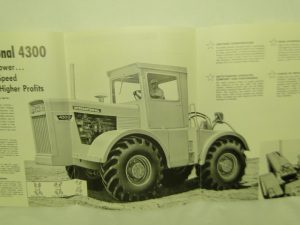
The 4300 was the first four-wheel tractor tractor sold and marketing by the International Harvester Company. The tractor was built by Hough who manufactured International Harvesters line of Construction Pay Loaders. The tractor was in part a reaction to the upcoming release of John Deere’s 8010 Tractor.
The tractor was massive weighing in at over 29,00 pounds. It was powered by an International Harvester, 6-cylinder, 817 cubic-inch, 300 horsepower turbocharged diesel engine that could do about 200 horsepower on the drawbar. The transmission has 8 forward gears and four reverse gears. It was also rated to pull a ten bottom plow.

The 4300 was produced from 1961 to 1965 with only a total of 44 built .Back in 1970 the 4300 would have cost you about $12,000 US dollars or about $80,000 US dollars in 2019. The tractor proved a financial failure for the company with limited production in part for being too big, too soon.
4 – The Case 1200 Traction King
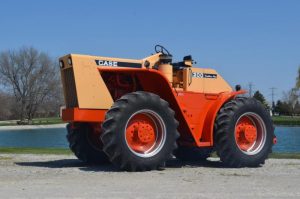
The 1200 Traction King was J. I. Case’s first four-wheel drive tractor. Instead of building a more expensive articulating tractor, Case built a rigid frame model with 4- way steering. This unique steering meant you could use front steering for conventional field work and for road travel.

The rear steering could be used for hitching up to implements and maneuvering in close spaces. With this design the front wheels could turn in one direction while the rear wheels turned the opposite direction.
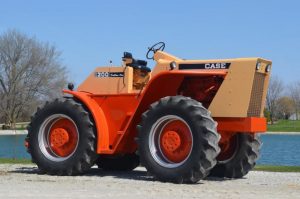
The tractor could also crab steer or steer the wheels so they both turned the same direction. This allowed the tractor to compensate for drift on side slopes and to turn the wheels uphill. The 1200 is cited as the first tractor to have this type of steering.
The 1200 was powered by a J. I. Case 6-cylinder, 451 cubic-inch diesel engine. This engine was turbocharged which took it from 105 horsepower to 120 horsepower on the PTO.
 .
. 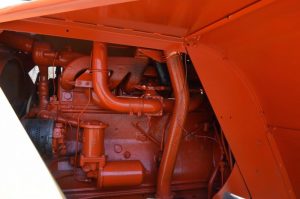
It weighed in at about 17,200 pounds and was rated to pull an eight-bottom plow. The transmission has six forward speeds and six reverse speeds that range from 2.6 to 13.4 miles per hour.
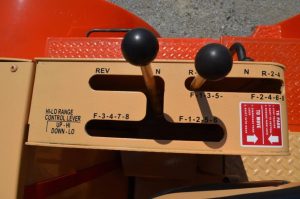
Only 1,549 of these tractors were built from about 1964 to 1969. Production ended when Case phased out the 1200 for the new 1470 model. Back in 1969 this tractor would have cost you about $20,200 US dollars or about $141,000 US dollars in 2019.
3 – The International Harvester 2 plus 2
In 1978 International Harvester introduced the 3388 and 3588 tractors, the company’s first in their new line of 2 plus 2 tractors.
The tractors proved an initial success for the company, producing nearly 3,000 tractors between the two new models. In 1979 with its new line of 2 plus 2 tractors International Harvester captured a quarter of the four wheel drive tractor sales.
Unlike other four wheel drive tractors, the 2 plus 2 had their cabs located behind the articulation join. The rear half of the tractor was actually the back half of the International 86 series two wheel drive tractors. The engine was mounted ahead of the front axle which increased the weight on the front drive axle to increase traction.
These tractors were also more cost efficient to build since they used readily available components in current use by other International tractors. The 2 plus 2 also used existing international engines. The 3388 model was powered by a DT-436 turbo charged diesel engine rated at 130 horsepower on the PTO.
The 3588 model was powered by a DT-466 turbo charged diesel engine rated at 150 horsepower on the PTO. Both tractors used IHC’s torque amplified transmission with 16 forward speeds and 8 reverse speeds. A total of 2,146 of the model 3388’s were built and 5,643 of the 3588s were built. Both models weighed in at about 17, 500 pounds with a 15.9 foot turning radius.
Back in 1981 the 3388 would have cost you about $45,680 US dollars or about $132,160 US dollars today. While the 3588 would have cost you about $51,300 US dollars in 1981 or about $148,400 US dollars today. Both the 3388 and 3588 were built from 1979 to 1981. They were then replaced by the 60 series.
In November of 1984 Tenneco bought International Harvesters agricultural division and merged with J.I. Case. After the merger, the work on the 2 plus 2 series stopped and CaseIH went on to develop their Magnum line.
2 – The First Production Steiger
In the late 1950’s the Steiger brothers found themselves needing a larger tractor on their farm in Red Lake Falls Minnesota. After looking at the tractors available at the time including the Wagner they decided to build their own.
In 1963 the Brothers built this tractor, which was the first Steiger ever sold to the public. Their neighbor Lloyd Pierce bought the tractor and used it for many years on his farm.This tractor was built after `Barney`, the first Steiger that the brothers built for use on their own farm.
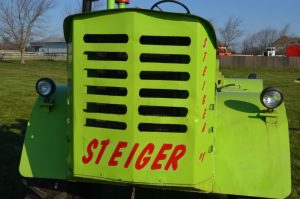
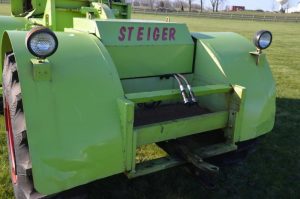
After the Pierce tractor was built, the brothers decided to start commercial production and built around 5 tractors in the barn on the Steiger farm.
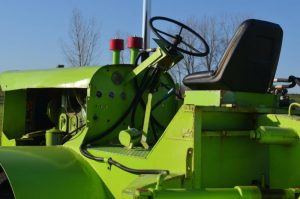
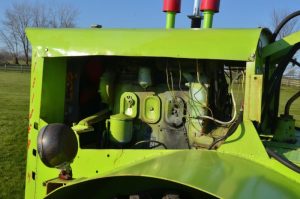
This tractor had always been in the Pierce Family and is where George Schaff acquired it. This tractor sold on the 2016 Remarkable George Schaff Collection auction for $34,125 US dollars.


This first production Steiger is powered by a Detroit 6-cylinder, 238 horsepower diesel engine. The transmission had 5 forward speeds and 1 reverse. The tractor weighed in at 15,000 pounds.

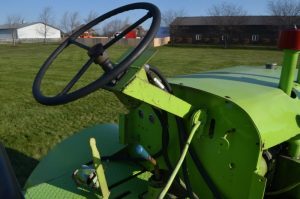
In the late 1980’s, Steiger fell on hard financial times and in 1986, Steiger was purchased by Tenneco, the parent company of Case IH.
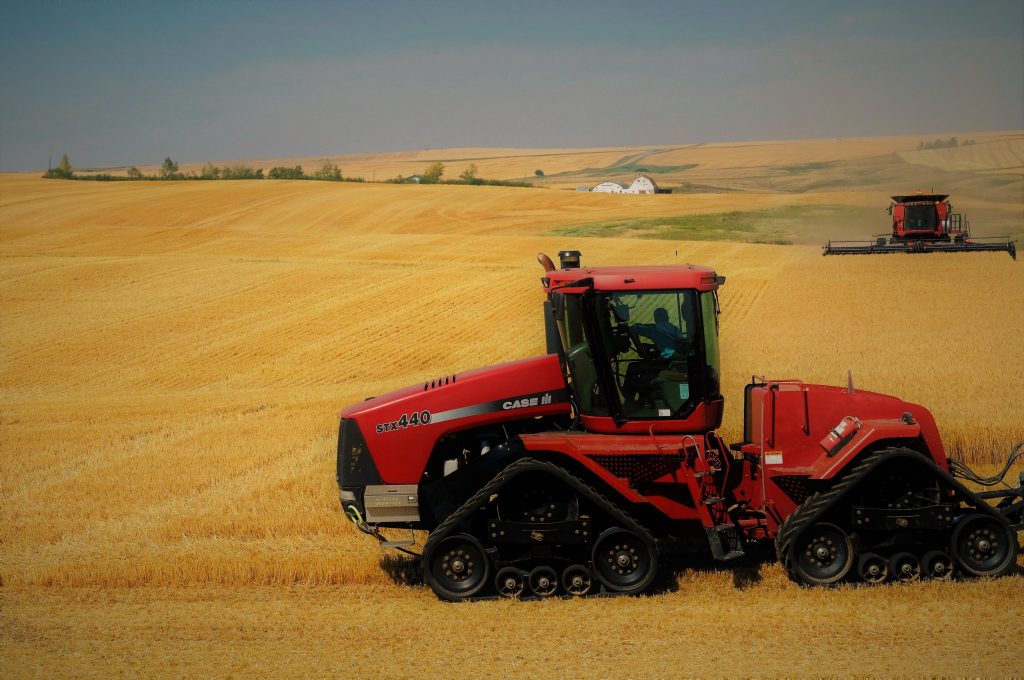
Today Case IH uses the Steiger name on their Quadtrac and four-wheel drive tractors.
1 – The Big Bud 747
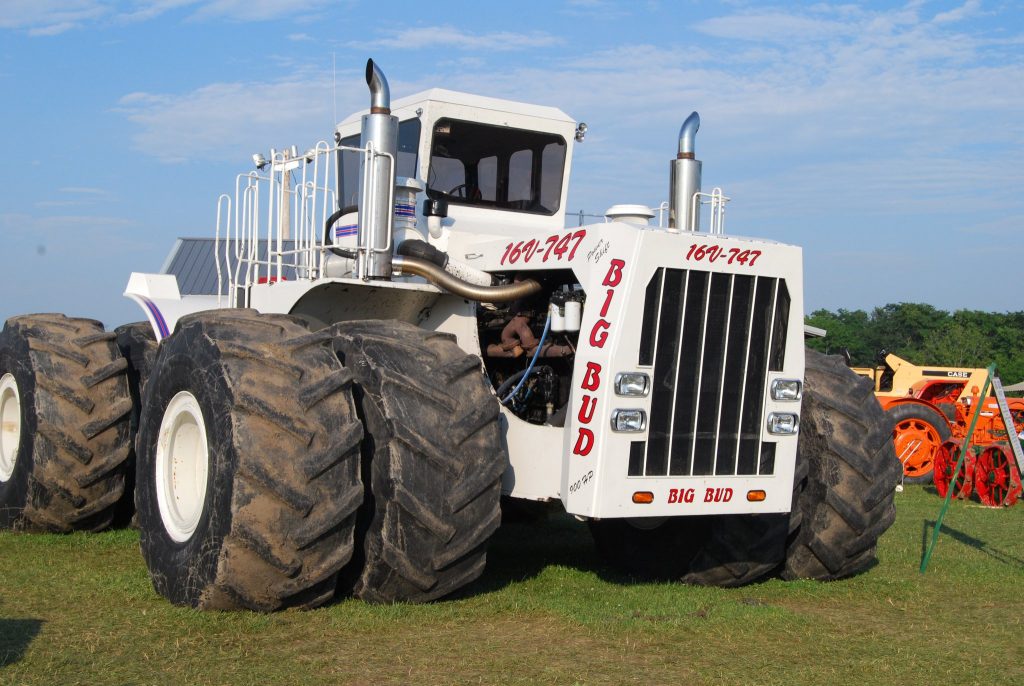
The Big Bud 747 held the title for many years as the World’s Largest Farm Tractor. At 900 horsepower, It’s about twice the size of most farm tractors currently on the Market.
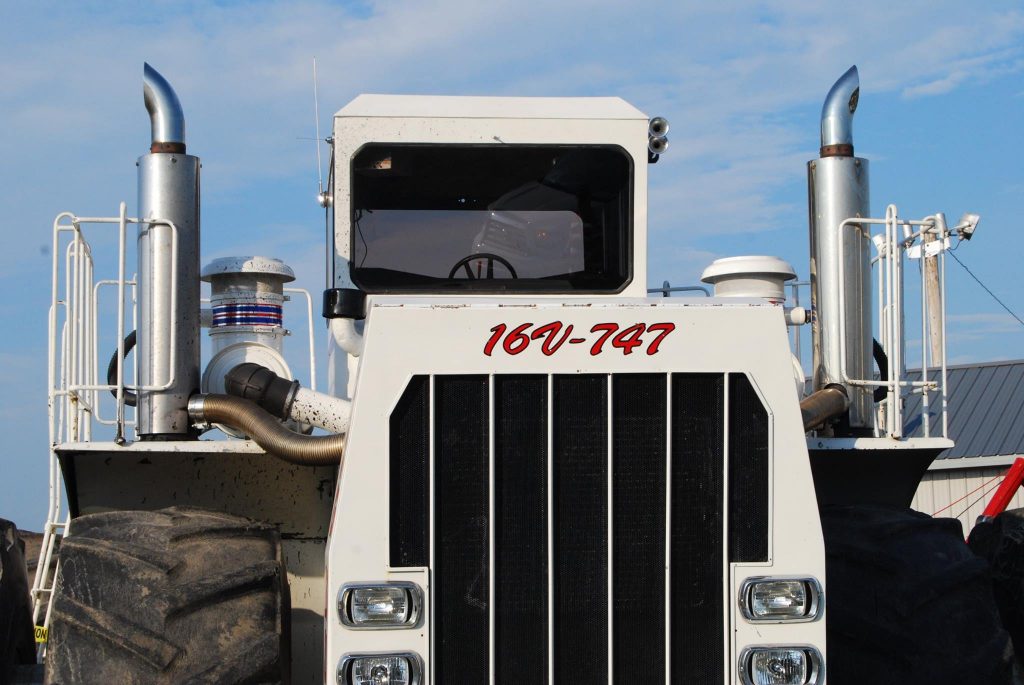
Its powered by Detroit Diesel 16-cylinder, 1472 cubic-inch, two-cycle engine. It was originally rated at 760 horsepower, but was later increased to 860 horsepower and then finally increased to 1100 horsepower. The transmission has 6 forward speeds and 1 reverse speed. The 747 weighs in at 95,000 pounds, but weighs over 100,000 pounds when its 1,000 gallon fuel tank is full.
The 747 was built by the Northern Manufacturing Company, later renamed Big Bud Tractors in Havre, Montana in 1977. The tractor was made for the Rossi Brothers of Bakersfield, California for use on their cotton farms at an estimated cost of $300,000 US dollars. That’s about 1,178,000 US dollars today.
The Brothers used it for 11 years and then they sold it to Willowbrook Farms of Florida. After some years of disuse, it was bought by Randy and Robert Williams of Big Sandy, Montana just 60 miles from where the tractor was built in 1977. The Williams Brothers used it on their farm for many years. In 2000 the company who made the Big Buds custom 8-foot tires went bankrupt. This news contributed the the Brothers decision to retire the tractor and display it at the Heartland Museum in Clarion, Iowa.
In 1985 Big Bud Tractors was purchased by Messer Brothers. Production of the Big Bud slowed in the 1980s with the last one off the assembly line was in 1992.
So tell us what you think. Are these the top ten classic four wheel drive tractors? Or do you disagree? Give us your feedback in the comments.
What other top ten classic tractor videos do you want to see?
Leave us a note in the comments or email us.
Story by Dan Boomgarden
Click HERE to subscribe to our email list to get all the latest Classic Tractor Fever news, updates and special offers.
